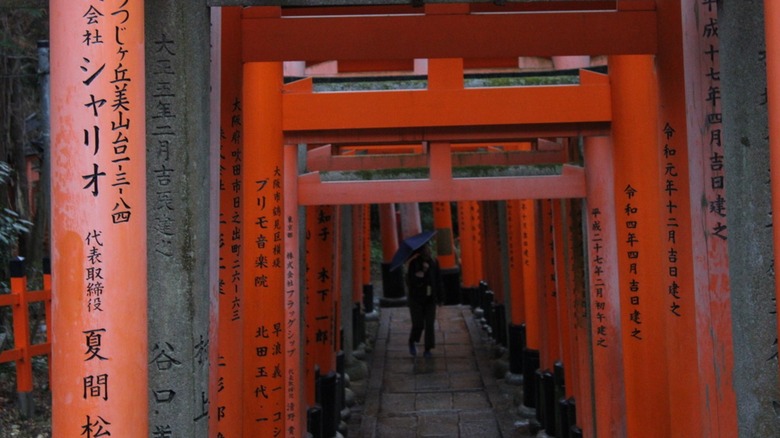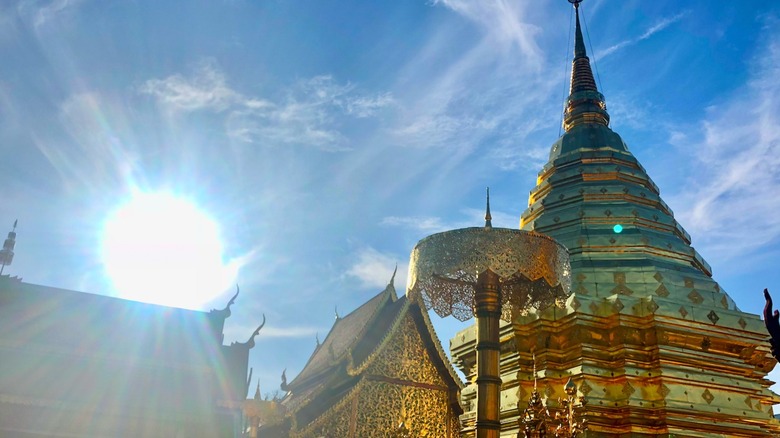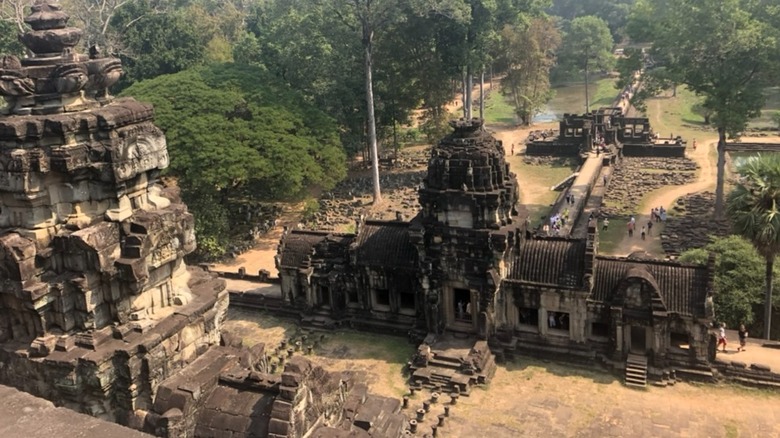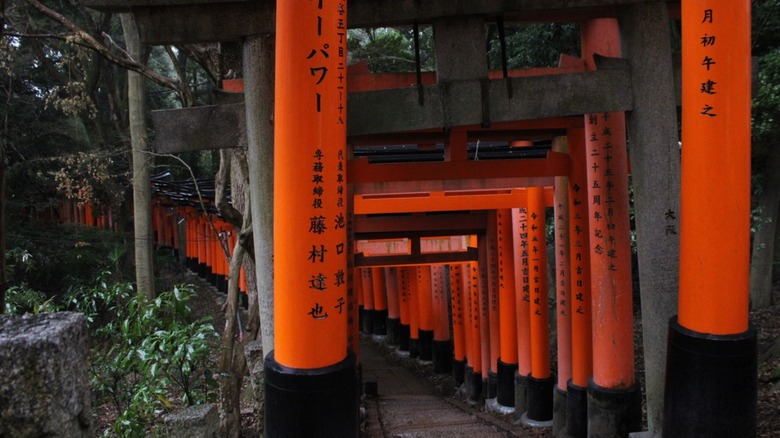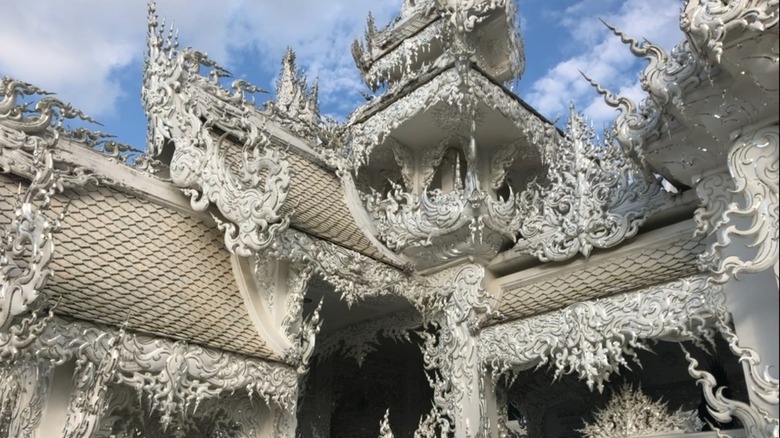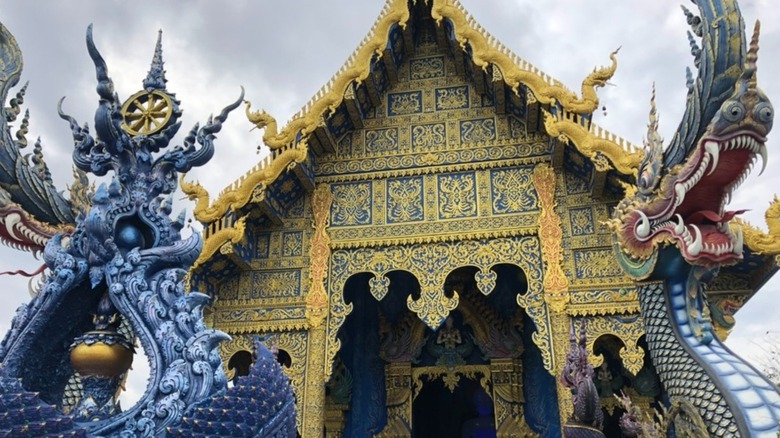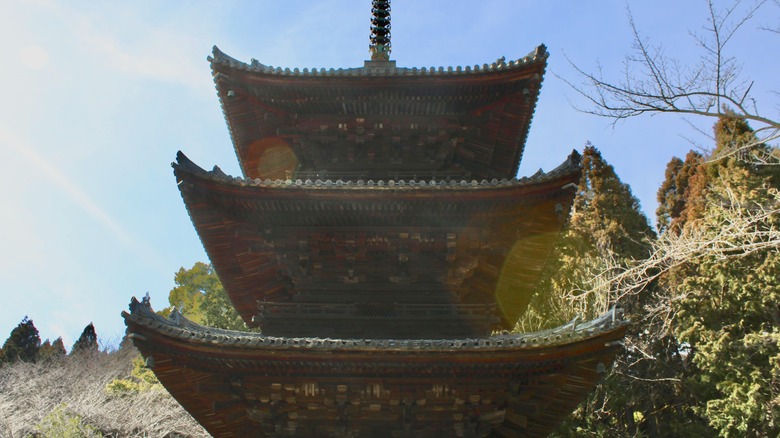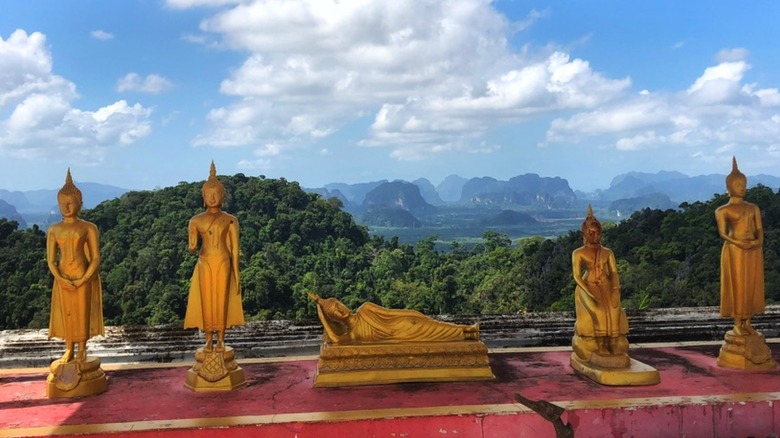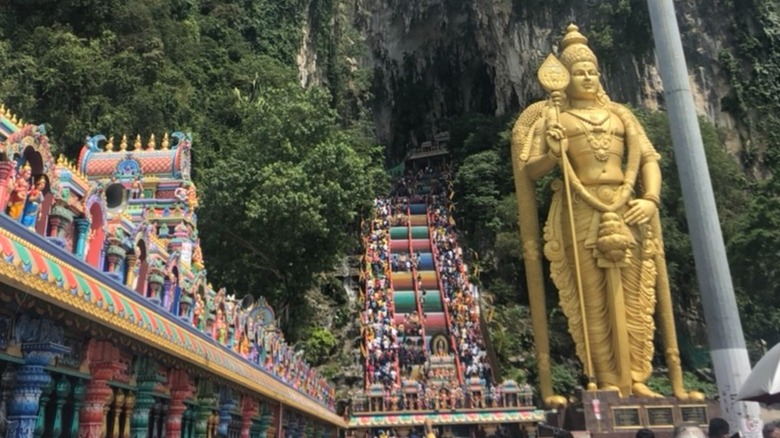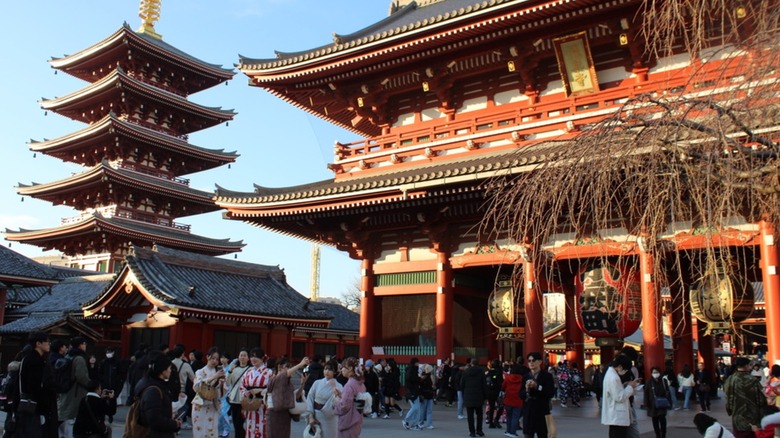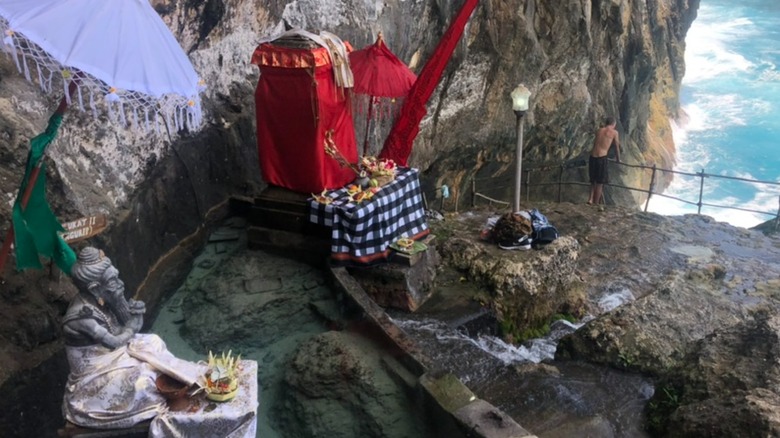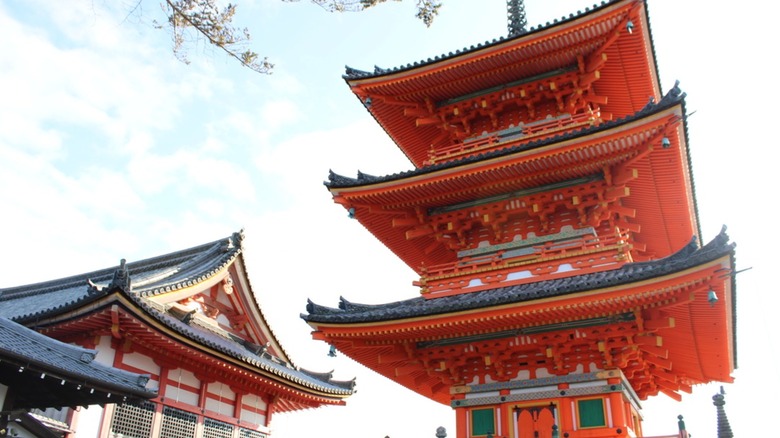I Wish I Could Visit These 11 Temples And Shrines From Thailand To Japan Again For The First Time
Many travel itineraries are packed with beaches, museums, and landmarks. However, when I visit a new country in Asia, I'm on the hunt for temples and shrines. Before my first international trip to Thailand, I'd never been to one of these sanctuaries and didn't quite know what to expect. Once I laid eyes on Doi Suthep in Chiang Mai, I became captivated by these impressive sites.
Shrines and pagodas provide a one-of-a-kind opportunity to experience the land's local culture. Not to mention that they have incredible architecture that rivals the most exquisite churches across Europe. I've found that temples possess a welcoming and peaceful atmosphere as well, which can be comforting in the midst of a busy trip to an unfamiliar place. To top it all off, they're typically free or very affordable.
While amazing places to visit, these intricate houses of worship require extra mindfulness since they're so sacred. Travelers need to follow a few unspoken etiquette rules for visiting a Buddhist temple or it can be perceived as highly disrespectful. These include things like wearing clothes that cover your shoulders and knees, removing your shoes before entering any structures, refraining from showing public affection, and never pointing at religious statues. Despite the few guidelines, I've had such magical experiences at temples and shrines. At this point, I have visited dozens of them around Asia. While each one brings something memorable to the table, a few are permanently etched into my mind forever.
1. Wat Phra That Doi Suthep, Chiang Mai, Thailand
It's only fitting to start with the first temple I visited in my life: Wat Phra That Doi Suthep hidden in the mountaintops of Chiang Mai. When I got on a plane by myself to Thailand at age 22, I had no idea what I was going to find. Thailand's most beautiful islands were divine, the beaches were spectacular, the food got better with every meal — but the thing that really mesmerized me was discovering Wat Phra That Doi Suthep.
Constructed in 1383, this temple is located all the way at the top of Doi Suthep Mountain, approximately 10 miles outside the main city center. It is one of the country's most sacred destinations. There is even a legend that a bone shard from the actual Buddha is preserved there. Reaching the temple requires a drive (or a motorbike ride in my case) to the entrance and then a long walk up huge stairs adorned with snake statues on either side. Once you ascend the steps, you're greeted with a maze of gorgeous structures and sweeping views over the area.
Wat Phra That Doi Suthep feels very luxurious since many of the statues and buildings are almost completely made of gold. Despite the opulent atmosphere, it's excellent for budget travelers because it doesn't cost a dime to enter. However, bear in mind that the national park where the temple resides costs 100 Baht (just over $3) for foreigners .
2. Angkor Wat, Siem Reap, Cambodia
Certain temples cross into the realm of iconic tourist attraction territory and Cambodia's Angkor Wat is absolutely one of those places. Located in Siem Reap, this enormous Hindu religious site attracts around 2.6 million visitors every year. Angkor Wat was even voted as the 12th best tourist attraction in the world in the 2024 Tripadvisor Travelers' Choice Awards.
Since it's become quite renowned, visiting Angkor Wat costs more than most temples at $37 per person for a full-day pass. Along with its great cultural significance, the complex is huge and covers over 154 square miles. It's so large that I suggest splurging for the 3-day pass at $62 to ensure you can see every inch of it.
Even as an extreme budget traveler who had just graduated from college, I thought Angkor Wat was worth the somewhat inflated ticket price. After spending days wandering the vast collection of 900-year-old edifices, I never once got bored and was continually surprised by how many gorgeous features I found, from stone walls decorated with detailed carvings of faces to buildings engulfed in tremendous tree roots.
3. Fushimi Inari Shrine, Kyoto, Japan
It's said that the 10,000 bright red Torii gates of Kyoto's Fushimi Inari Shrine signify the veil between the physical world and the spiritual one. I hiked my way through the endless trails of gates leading up to the top of Inariyama Mountain on the very early misty morning of my birthday in 2024. After that unforgettable experience, it's safe to say I agree that this free attraction in Japan feels notably sacred.
As a travel photographer, Fushimi Inari Shrine is by far one of my favorite places I've ever visited. It is so easy to take vacation photographs that look professional quality there. The only problem is that the spot also happens to be one of the most popular things to do in all of Japan and millions of people visit it every year. There is a palpable otherworldly quality to the Fushimi Inari Shrine, but it loses some of that magic when you're competing with hundreds of other visitors to get through the narrow pathways.
Since it's open 24/7, I'd highly recommend getting to Fushimi Inari Shrine as early as possible. I actually woke up at 3:30 a.m. while it was still dark outside and arrived by 6:30 in the morning. While this allowed me to have a relatively solitary experience, there were a few folks around even at that early hour. I can only imagine how busy it gets toward the afternoon in the high season.
4. The White Temple/Wat Rong Khun, Chiang Rai, Thailand
The first temple that truly took my breath away was Wat Rong Khun a.k.a. the White Temple. Located in the northern Thai city of Chiang Rai, this spectacularly designed complex was born from the inspired brain of local artist Chalermchai Kositpipat. He purchased it when it was falling apart and started turning it into his masterpiece in 1997. Today, Wat Rong Khun is still being diligently worked on and it is actually not expected to be completed for another few decades. That goes to show how intricate it really is — even after all this time, they still need more years to put the finishing touches on.
What really struck me about the temple is the design itself and how much symbolism is built into it. From a distance, Wat Rong Khun looks like a heavenly city plucked out of the realms above. Once you inch closer, there is a deeper, darker story hidden among the facade of the White Temple. The buildings feature statues of hands reaching up from the pits of hell and other eerie scenes that you can only really make out from up close. It's the ideal intersection of cultural site and art piece.
5. The Blue Temple/Wat Rong Suea Ten, Chiang Rai, Thailand
In addition to having some of the most colorful beaches in the world, Thailand is the proud home of just as many vibrant temples. The jaw-dropping Wat Rong Suea Ten a.k.a. the Blue Temple is a perfect example of this. This gem is located in the Thai city of Chiang Rai and is only a little over 20 minutes away from the White Temple on a motorbike. I managed to visit the White Temple in the morning and the Blue Temple by the afternoon when I was in Thailand.
Wat Rong Suea Ten is a bit smaller than most of the other temples and shrines on this list, but I think it makes up for its size in beauty. It was created from the remnants of an abandoned temple by Thai artist Phutta Kabkaew who studied under the man who designed the spectacular nearby White Temple. As its nickname suggests, it's mainly known for the bright, sapphire sanctuaries that can be spotted from a mile away. Beyond the color, the artistry is incredible and there are tons of strikingly massive statues of dragons, famous monks, and the Buddha throughout the space.
6. Mii-dera Temple/Onjo-ji, Otsu, Japan
When I call myself a spontaneous traveler, I mean that I will literally pick a random city off Google Maps to visit on a day trip. That's exactly what I did when I had a little extra time on my hands in Japan. I'd been in Kyoto for over a week and was craving a change of scenery, so I took the train to a town 25 minutes away called Otsu. After grabbing a breakfast of omurice from a family-run cafe, I walked to one of the few big attractions in the lakeside city: Mii-dera Temple.
This day was planned with such a laissez-faire attitude that I stumbled across Mii-dera accidentally while I was scrolling on Google Maps to see what was around me. I quickly realized upon arrival that I lucked out by discovering such a beautiful place on a whim. The 1,300-year-old temple is right at the base of Mount Hiei, which means that the exquisite structures are surrounded by equally stunning nature. There is 300 acres of space to explore and the ticket attendant even provided me with a map to ensure I didn't get lost.
While I did have to purchase a 600¥ ticket to enter the grounds (a little over $4), this particular temple was like spending the day at a national park, so that felt like a small price to pay. Throughout the area, there are multiple buildings to take in and visitors eventually reach an incredible view over Lake Biwa and the city. One of my favorite parts of visiting Mii-dera Temple was getting a delicious matcha mochi treat and tea from Honke Rikiken, a tiny dessert shop inside the temple's grounds.
7. Tiger Cave Temple/Wat Tham Suea, Krabi, Thailand
To be completely frank, I didn't quite know what I was getting myself into when I booked a day trip to the Tiger Cave Temple from Krabi. While I was fully aware that this religious site at the top of a mountain would get my heart pumping, I didn't realize how intense the 1,260-step climb in the brutal Thai heat would be. The day trip I booked through my hostel only provided transportation and then left us to walk up to the temple by ourselves, so I was conquering the whole thing on my own. At least that's what it felt like until I began ascending up the steps.
Even though I was technically alone, I was surrounded by elderly couples helping each other along and young mothers with babies happily strapped to their backs. I hiked alongside families with laughing children and heard a barrage of languages passing by the whole journey. People from all over the world — multiple ages, races, genders, and nationalities — were all on the same mission of making it up the endless path of steep stairs. Meanwhile, travelers on their way down urged those still heading up that it was completely worth the pain in the end.
There was a sense of unity as we all struggled up step after step, but I'd still recommend preparing for it like a solo hike because it is definitely a tough trek. Finally, I breached the final steps over 1,000-feet high to reach the official Tiger Cave Temple and its signature Buddha made of gold. The sculptures were a sight to behold, but I was really focused on the astonishing, expansive views over southern Thailand. The descenders were right: It was fully worth the exertion.
8. Batu Caves near Kuala Lumpur, Malaysia
I was already fond of Malaysia's easy-to-navigate capital city of Kuala Lumpur thanks to its diverse culinary scene and modern comforts, but experiencing Batu Caves solidified my adoration. Not only did I get the opportunity to see the rainbow grounds, but I happened to be there in the midst of the annual Thaipusam Festival that goes down on the first full moon of January or February depending on the year. It is a Hindu event meant to commemorate the god Murugan's victory over a demon named Surapadman.
Participants in the Thaipusam celebration at the Batu Caves perform various rituals to demonstrate their devotion and control over their human form. I walked up the colorful steps beside people with dozens of needles piercing their flesh or giant hooks dug into their backs to hold up a massive contraption called a kavadi. While it was undeniably jarring to witness, it wasn't too difficult to get over the culture shock and appreciate the fact that I was seeing something so different from my own world firsthand.
Even if you're not in Malaysia on the day of the festival, the Batu Caves deserve a visit at any time of the year. The large multi-colored staircase leading inside is super photogenic. The interior is just as eye-catching, as the ceiling is open to provide a natural skylight into the temple space.
9. Sensō-ji Temple, Tokyo, Japan
Practically everyone who visits Tokyo makes a stop at Sensō-ji Temple in the heart of the bustling city. In fact, it is frequented by 30 million people every year. Given my thriving love of temples and the fact that it is such an iconic attraction, I decided to make Sensō-ji one of the first places I visited on my trip to Japan.
Many of the temples I've been to are hidden away in forests or even at the top of mountains, but this one is right smack dab in the middle of the Asakusa neighborhood. I turned a modernized city corner and suddenly came face-to-face with a temple that is well over a millennia old. A long walkway lined with adorable shops on either side selling souvenirs, snacks, and tons of other fun items leads up to the actual shrine structures. I spent at least an hour perusing these stores alone.
After getting through the lengthy shopping street, I reached the complex's bright red Asakusa Shrine. Standing in a corner, I quietly took in all the aspects of the local culture unfolding around me, ranging from people performing prayer rituals to visitors taking proud photos with wide smiles. One of my favorite aspects of Sensō-ji (and Japanese temples in general) is the booths selling charm bags. These pretty little pouches are meant to bring good luck in various areas of life from fertility to professional success. At Sensō-ji, I got one charm for good luck with money and one for pet protection to keep my dog blessed, too.
10. Pura Segara Kidul & Guyangan Temple, Bali, Indonesia
If there is any temple that I'd have to deem as "scary", it is Pura Segara Kidul & Guyangan Temple next to Peguyangan Waterfall. This one is located on one of the most breathtaking and affordable Indonesian islands just off the coast of Bali called Nusa Penida. The island offers a wild collection of adventures, including this temple that is built into the face of a cliff so close to the Indian Ocean that it consistently gets lapped by the waves.
While that all sounds intoxicatingly beautiful, and it is, there is another very crucial element to visiting Pura Segara Kidul & Guyangan Temple. The only way to gain access to this seaside shrine is by embarking down hundreds of precarious blue stairs that descend the rocky cliffside. This isn't a closed, secure staircase either; it is completely exposed with just a thin railing to hold onto and spaced out steps with a vicious ocean visibly raging below.
As someone who always had a fear of heights, the journey to Pura Segara Kidul & Guyangan Temple was basically my ultimate nightmare. I was terrified the entire way down and most of the time that I was visiting the temple/waterfall knowing I'd have to climb back up eventually. On the bright side, it did basically cure my fear of heights because nothing could ever be as terror-inducing as that scenario. Plus, it was completely unlike any other temple I've ever visited.
11. Kiyomizu-dera, Kyoto, Japan
Towering above the city of Kyoto you'll find one of the best places in all of Japan to see the fall foliage: Kiyomizu-dera Temple. This 1,200-year-old place of worship is nestled right on Mount Otowa and it stands out as exceptional even in a temple-rich city like Kyoto. Visitors have to trek through the bulk of the Higashiyama district to gain entry to Kiyomizu-dera and there are lots of interesting shops along the expedition.
The actual temple features bright architecture like the red shrines pictured above and an elevated main hall that is supported by wooden columns. Thanks to its lofty location, you can see all the way out over Kyoto from Kiyomizu-dera and the whole area comes alive with vibrant oranges and yellows in autumn from October through December. While the temple and view are the main attractions, people also visit to drink from the small Otowa Waterfall that is said to bring various good fortunes depending on which flow you consume.
Even just being on the grounds of Kiyomizu-dera at all can be considered lucky. While I'm a bit of a skeptic when it comes to things like that, I will admit that I had a horrible knee injury when I was visiting Kiyomizu-dera and could barely walk. To my amazement, it was almost completely healed the next day and the pain has never returned. Maybe it was just a coincidence, but who knows?
